Del Mar Photonics -
Newsletter
Russian-French workshop on Nanosciences and Nanotechnologies
Main topics : Nanophotonics carbon nanotubes, graphene, spintronics
Program
Monday Sept 13th
8:30–09:00 Welcome and registration
9:00–09:20 Opening
9:20–11:00 Session M1 : Carbon Nanotubes and Graphene
9:20-09:40 Elena Obraztsova, Prokhorov General Physics Institute, Moscow
Nanocarbon for non-linear optics : from carbon nanotubes to graphene
9:40-10:00 Annick Loiseau, LEM, Châtillon…
10:00-10:20 Vladimir Kuznetsov, Boreskov Institute of Catalysis, Novosibirsk,
Multi-walled carbon nanotubes with ppm level of impurities
10:20-10:40 Emmanuel Flahaut, CIRIMAT, Toulouse, Double-walled carbon nanotubes
: synthesis and functionalisation by halogenation
10:40–11:00 Alexander Okotrub, Nikolaev Institute of Inorganic Chemistry,
Novosibirsk, Structure and properties of fluorinated nanocarbon materials
11:00-11:30 Break
11:30-12:50 Session M2 : Nanophotonics
11:30–11:50 Vladimir D. Kulakovskii, ISSP, Chernogolovka Bose condensates of
spin or exciton polaritons in high-Q GaAs based microcavities in a magneticfield
11:50–12:10 Pascale Senellart, LPN, Marcoussis, Ultrabright solid state source
of entangled photon pairs
12:10-12:30 Leonid E. Golub, Ioffe Institute, Saint Petersburg, Spin and
transport effects in quantum microcavities
12:30-12:50 Bernhard Urbaszek, LPCNO, Toulouse,Robust quantum dot state
preparation : Rabi oscillations, adiabatic passage and nuclear spin effects
12:50-14:00 Lunch
14:00-1540 Session M3 : Nanomagnetism and Spintronics
14:00–14:20 Sergey Tarasenko, Ioffe Institute, Saint Petersburg Spin currents
induced by terahertz radiation in quantum wells
14:20–14:40 Denis Scalbert, GES, Montpellier,Dynamics of collective spin
excitations in n-doped CdMnTe quantum wells
14:40-15:00 Aristide Lemaître, LPN, Marcoussis,Magnetic anisotropy in GaMnAsP
ferromagnetic semiconductors
15:00-15:20 Andrei Titov,Prokhorov General Physics Institute, Moscow, Electronic
properties of Mn-rich nanocolumns in germanium
15:20-15:40 David Ferrand, Institut Néel, GrenobleDynamics of Mn spins in
(Cd,Mn)Te quantum wells and quantum dots
15:40-16:10 Break
16:10-18:10 Session M4 : Semiconductor Nanowires
16:10-16:30 Alexander Titkov, Ioffe Institute, Saint Petersburg Electrical
properties of GaAs nanowire arrays overgrown with GaAlAs or SiOx layers :
AFM/EFM studies of individual GaAs nanowires
16:30-16:50 Tao Xu, IEMN, Lille Role of Au diffusion in the surface structure
and charge separation of silicon nanowires
16:50-17:10 Maria Tchernycheva… , IEF, Orsay
17:10-17:30 Yann-Michel Niquet, CEA/INAC, Grenoble, Modeling the transport
properties of semiconductor nanowires
17:30-17:50 Vladimir G. Dubrovskii, St Petersburg Academic University, Saint
Petersburg Growth models of semiconductor nanowires
17:50-18:10 Frank Glas or Jean-Christophe HarmandKinetics and statistics of
III-V nanowire growth, LPN, Marcoussis
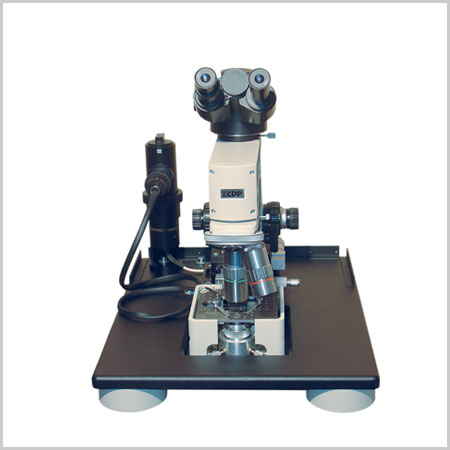 |
Near Field Scanning Optical Microscope
NSOM Godwit - best spatial optical resolution using the near field scanning optical microscope
(NSOM) principle
Near field scanning optical microscope (NSOM) and atomic force microscope (AFM)
modes of operation
NSOM images with laser and lamp illumination
Commerciaand custom NSOM probes
Near field optica and luminescence images in photon counting mode
NSOM images in collection and illumination modes
Transmission and reflection NSOM configurations
20 nm optical resolution (Raleigh criteria for spatial resolution)
State-of-the-art optical microscope console: simultaneous sample and tip
observation with long working distance objectives
Femtosecond and UV excitation
True single molecule detection
High-resolution AFM imaging of DNA
Godwit-uScope data acquisition and Godwit-FemtoScan image processing software
Ambient light protection with light-tight box
|
Tuesday Sept 14
The morning session will take place at LPN, Marcoussis
8:00-9:00 Travel to LPN (Laboratory of Photonics and Nanostructures,
Marcoussis), Departure from CNRS headquarters by bus, Arrival at LPN
9:00-11:00 lab tour, open discussions
11:00-12:40 Session T1 : Nanomagnetism and Spintronics
11:00-11:20 Boris Aronzon, Kurchatov Institute of Atomic Energy, Moscow,
Ferromagnetic ordering in 2D semiconducting structures : GaAs/InGaAs/GaAs
quantum wells with remote Mn d layer
11:20-11:40 Alexandre Bouzdine, CPMOH, Bordeaux, Superconductor-ferromagnet
heterostructures
11:40-12:00 Yuri Yuzyuk, Multiferroic thin films, Southern Federal University,
Rostov-on-Don(title to be confirmed)
12:20-12:20 Dimitri Roditchev, INSP, Paris, Vortex confinement studied by
scanning tunneling spectroscopy
12:20-12:40 Alexey V. Khvalkovskiy, Prokhorov General Physics Institute,
Moscow(to be confirmed)
12:40-14:00 Buffet lunch and discussions
14:00-15:00 Travel back to CNRS headquarters
15:00-16:10 Session T2 : Nanophotonics
15:00-15:20 Aleksei M. Zheltikov, Physics Department, Lomonosov State
University, Moscow, Nanomanaged photonic-crystal fibers in ultrafast optical
science
15:20-15:40 Kamel Bencheikh, LPN, Marcoussis,
Coherent-population-oscillation-based slow light in Er ions-doped solids and in
semiconductor photonic crystals
15:40-16:00 Sergey G. Tikhodeev, Prokhorov General Physics Institute, Moscow,
Light emission from chiral photonic crystal slabs
16:00-16:20 Olivier Gauthier-Lafaye, LAAS, ToulouseAll photonic crystal DFB
lasers in GaAs membranes and beyond
16:20-16:40 Maxim Rybin, INL, LyonPhotonic structures combining Si photonic
crystal membranes and graphene layers (to be confirmed)
16:40-17:00 Break
17:00-18:20 Session T3 : Carbon nanotubes and Graphene
17:00-17:20 Alexander M. Shikin, Physics Department, State University, Saint
Petersburg, Induced spin-orbit splitting of electron states in thin layers of
light metals and graphene
17:20-17:40 Johann Coraux, Institut Néel, GrenobleStructure and electronic
properties of graphene on iridium
17:40-18:00 Ekaterina Obraztsova, Prokhorov General Physics Institute, Moscow,
Electron excitation and relaxation in carbon nanotubes and graphene measured by
pumped-probe techniques
18:00-18:20 Matthieu Paillet, LCVN Montpellier, indexing carbon nanotubes, by
Raman spectroscopy
Wednesday Sept 15
9:00-10:20 Session W1 : Nanophotonics
9:00-09:20 Alexander Granovskiy, Magnetism Department, State University, Moscow,
Magnetooptics in nanostructures, magnetophotonic crystals and diluted magnetic
semiconductors
9:20-09:40 Vladimir P. Kochereshko, Ioffe Institute, Saint Petersburg, Interface
carrier states in no-common-atom heterointerface ZnSe/BeTe
9:40-10:00 Gilles Martel, CORIA, Rouen, Which saturable absorber for high power
mode-locked fibre laser ? Multiple quantum well versus carbon nanotubes
10:00-10:20 Valentin Zhmerik, Ioffe Institute, Saint Petersburg, Ultra-violet
emitters with AlGaN quantum well structures grown by plasma-assisted molecular
beamepitaxy
10:20-10:50 Break
10:50-12:00 Session W2 : Semiconductor Nanowires and Nanophotonics
10:50-11:10 Alexei Platonov, Ioffe Institute, Saint Petersburg, Photoluminescent
studies of GaAs quantum dots embedded into AlGaAs nanowires
11:10-11:30 Jean-Philippe Poizat, Institut Néel, Grenoble, Subnanosecond
spectral diffusion of a single quantum dot in a nanowire
11:30-11:50 Etienne Talbot, GPM, Rouen, Characterisation of Si nanoclusters and
Si nanowire nanostructures by atom probe
11:50-12:10 Conclusions
Product news and updates - Training Workshops
- Featured Customer - Other News
 |
Near Field Scanning Optical Microscope
NSOM Godwit - best spatial optical resolution using the near field scanning optical microscope
(NSOM) principle
Near field scanning optical microscope (NSOM) and atomic force microscope (AFM)
modes of operation
NSOM images with laser and lamp illumination
Commerciaand custom NSOM probes
Near field optica and luminescence images in photon counting mode
NSOM images in collection and illumination modes
Transmission and reflection NSOM configurations
20 nm optical resolution (Raleigh criteria for spatial resolution)
State-of-the-art optical microscope console: simultaneous sample and tip
observation with long working distance objectives
Femtosecond and UV excitation
True single molecule detection
High-resolution AFM imaging of DNA
Godwit-uScope data acquisition and Godwit-FemtoScan image processing software
Ambient light protection with light-tight box
|
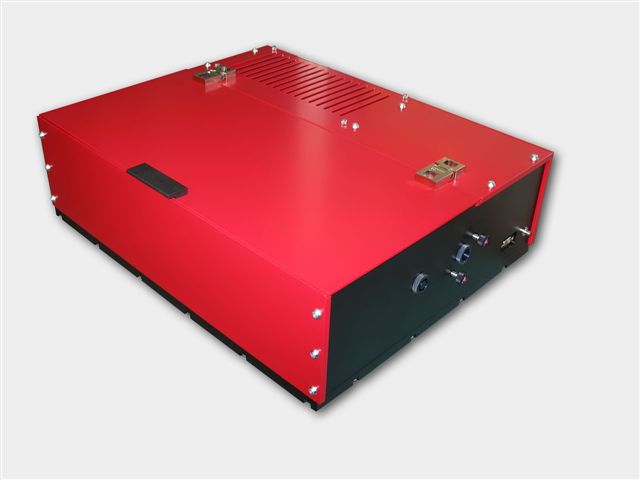 |
Trestles LH Ti:Sapphire
laser
Trestles LH is a new series of high quality femtosecond Ti:Sapphire
lasers for applications in scientific research, biological imaging, life
sciences and precision material processing. Trestles LH includes integrated
sealed, turn-key, cost-effective, diode-pumped
solid-state (DPSS). Trestles LH lasers offer the most attractive pricing
on the market combined with excellent performance and reliability. DPSS LH
is a state-of-the-art laser designed for today’s applications. It combines
superb performance and tremendous value for today’s market and has
numerous advantages over all other DPSS lasers suitable for Ti:Sapphire
pumping. Trestles LH can be customized to fit customer requirements and
budget. Reserve a
spot in our Femtosecond lasers training
workshop in San Diego, California. Come to learn how to build a
femtosecond laser from a kit
|
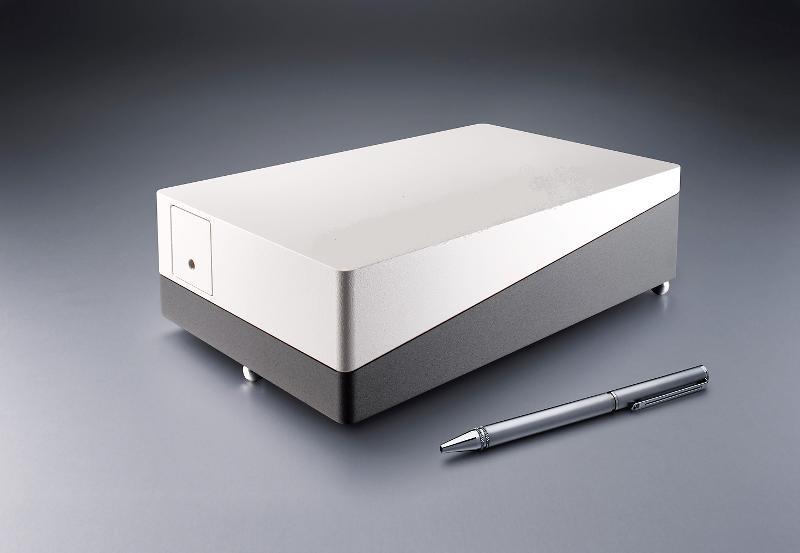 |
DPSS DMPLH lasers
DPSS DMP LH series lasers will pump your Ti:Sapphire laser.
There are LH series lasers installed all over the world pumping all makes & models
of oscillator. Anywhere from CEP-stabilized femtosecond Ti:Sapphire oscillators
to ultra-narrow-linewidth CW Ti:Sapphire oscillators. With up to 10 Watts CW
average power at 532nm in a TEMoo spatial mode, LH series
lasers has quickly proven itself
as the perfect DPSS pump laser for all types of Ti:Sapphire or dye laser.
Ideal for pumping of:
Trestles LH
Ti:Sapphire laser
T&D-scan laser
spectrometer based on narrow line CW Ti:Sapphire laser
|
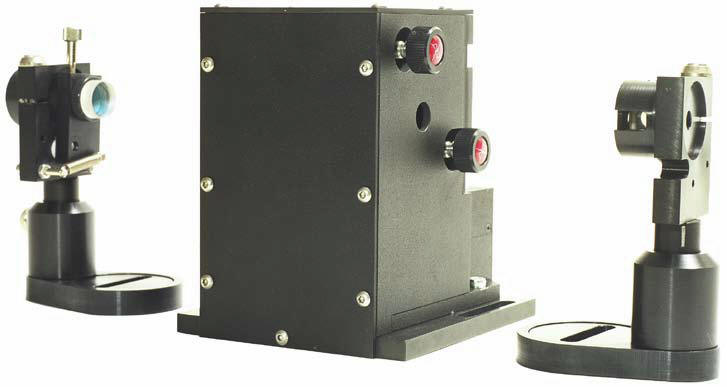 |
Pismo pulse picker
The Pismo pulse picker systems is as a pulse gating system that lets single
pulses or group of subsequent pulses from a femtosecond or picosecond pulse
train pass through the system, and stops other radiation. The system is
perfectly suitable for most commercial femtosecond oscillators and
amplifiers.
The system can pick either single pulses, shoot bursts (patterns of single
pulses) or pick group of subsequent pulses (wider square-shaped HV pulse
modification). HV pulse duration (i.e. gate open time) is 10 ns in the default
Pismo 8/1 model, but can be customized from 3 to 1250 ns upon request or made
variable. The frequency of the picked pulses starts with single shot to 1 kHz
for the basic model, and goes up to 100 kHz for the most advanced one.
The Pockels cell is supplied with a control unit that is capable of synching
to the optical pulse train via a built-in photodetector unit, while electric
trigger signal is also accepted. Two additional delay channels are available
for synching of other equipment to the pulse picker operation. Moreover, USB
connectivity and LabView-compatible drivers save a great deal of your time
on storing and recalling presets, and setting up some automated experimental
setups. One control unit is capable of driving of up to 3 Pockels cells, and
this comes handy in complex setups or contrast-improving schemes. The system
can also be modified to supply two HV pulses to one Pockels cell unit,
making it a 2-channel pulse picker system. This may be essential for
injection/ejection purposes when building a regenerative or multipass
amplifier system.
|
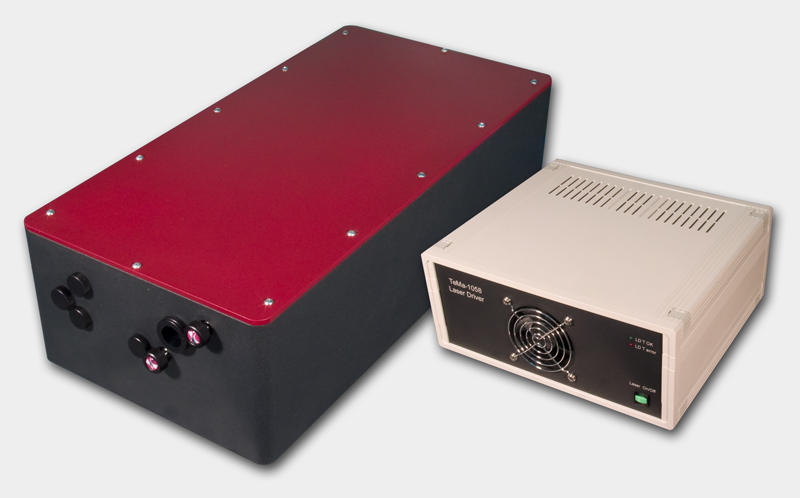 |
Tourmaline Yb-SS-1058/100 Femtosecond solid state laser system
The Yb-doped Tourmaline Yb-SS laser radiates at 1058±2 nm
with more than 1 W of average power, and enables the user to enjoy
Ti:Sapphire level power at over-micron wavelengths. This new design from Del
Mar's engineers features an integrated pump diode module for greater system
stability and turn-key operation. The solid bulk body of the laser ensures
maximum rigidity, while self-starting design provides for easy
"plug-and-play" operation.
|
 |
New laser spectrometer
T&D-scan for research that
demands high resolution and high spectral
density in UV-VIS-NIR spectral domains - now available with
new pump option!
The
T&D-scan
includes
a CW ultra-wide-tunable narrow-line laser, high-precision wavelength meter,
an electronic control unit driven through USB interface as well as a
software package. Novel advanced design of the fundamental laser component
implements efficient intra-cavity frequency doubling as well as provides a
state-of-the-art combined ultra-wide-tunable Ti:Sapphire & Dye laser
capable of covering together a
super-broad spectral range between 275 and 1100 nm. Wavelength
selection components as well as the position of the non-linear crystal are
precisely tuned by a closed-loop control
system, which incorporates highly accurate wavelength meter.Reserve a
spot in our CW lasers training
workshop in San Diego, California. Come to
learn how to build a
CW
Ti:Sapphire laser from a kit
|
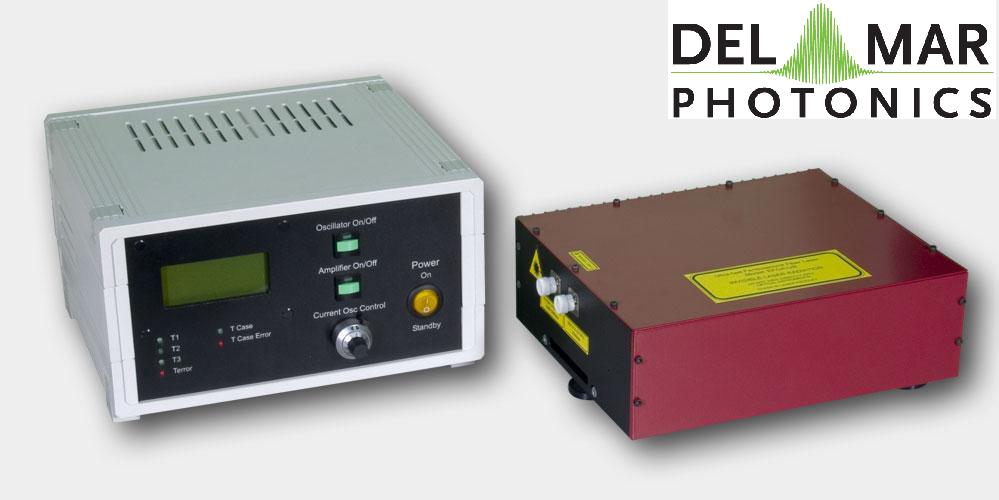
|
Femtosecond fiber laser Model Pearl-70P300
-
request a quote
Femtosecond pulsed lasers are used in many fields of physics, biology,
medicine and many other natural sciences and applications: material processing,
multiphoton microscopy, «pump-probe» spectroscopy, parametric generation and
optical frequency metrology. Femtosecond fiber lasers offer stable and steady
operation without constant realignment.
The Pearl-70P300 laser comprises: a passively mode-locked fiber laser, providing
pulses with repetition rate 60 MHz and having duration of 250-5000 fs, an
amplifier based on Er3+ doped fiber waveguide with pumping by two laser diodes,
a prism compressor for amplified pulse compression. |
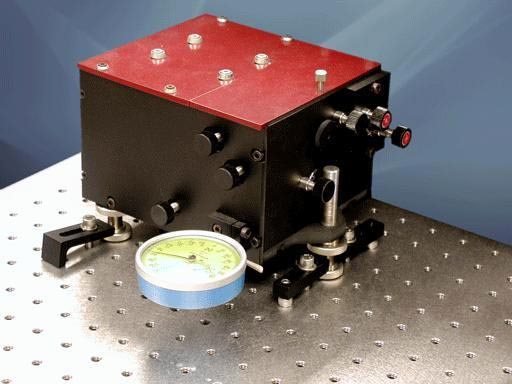
|
Reef femtosecond autocorrelators
The autocorrelation technique is the most common method used to determine
laser pulse width characteristics on a femtosecond time scale.
The basic optical configuration of the autocorrelator is similar to that of an
interferometer (Figure.1). An incoming pulse train is split into two beams of
equal intensity. An adjustable optical delay is inserted into one of the arms.
The two beams are then recombined within a nonlinear material (semiconductor)
for two photon absorption (TPA). The incident pulses directly generate a
nonlinear TPA photocurrent in the semiconductor, and the detection of this
photocurrent as a function of interferometer optical delay between the
interacting pulses yields the pulse autocorrelation function. The TPA process is
polarization-independent and non-phasematched, simplifying
alignment.
Reef-RT autocorrelator measures laser
pulse durations ranging from 20 femtoseconds to picosecond regime. It measures
pulse widths from both low energy, high repetition rate oscillators and high
energy, low repetition rate amplifiers. Compact control unit operates
autocorrelator head and optional spectrometer through on-screen menus.
Autocorrelation trace and spectrum can be displayed and analyzed on screen or
downloaded to remote computer.
New:
Reef-20DDR autocorrelator
-
Multishot-FROG for femtosecond fiber laser oscillator and amplifier
Collinear (interferometric) autocorrelation
for 1300-2000 nm wavelength range |
 |
Near IR viewers
High performance infrared
monocular viewers are designed to observe radiation emitted by
infrared sources. They can be used to observe indirect radiation of IR
LED's and diode lasers, Nd:YAG, Ti:Sapphire, Cr:Forsterite, dye lasers and
other laser sources. IR viewers are ideal for applications involving the
alignment of infrared laser beams and of optical components in
near-infrared systems. Near IR viewers
sensitive to laser radiation up to 2000 nm.
The light weight, compact monocular may be used as a hand-held or facemask
mounted for hands free operation.
Ultraviolet viewers are
designed to observe radiation emitted by UV sources. |
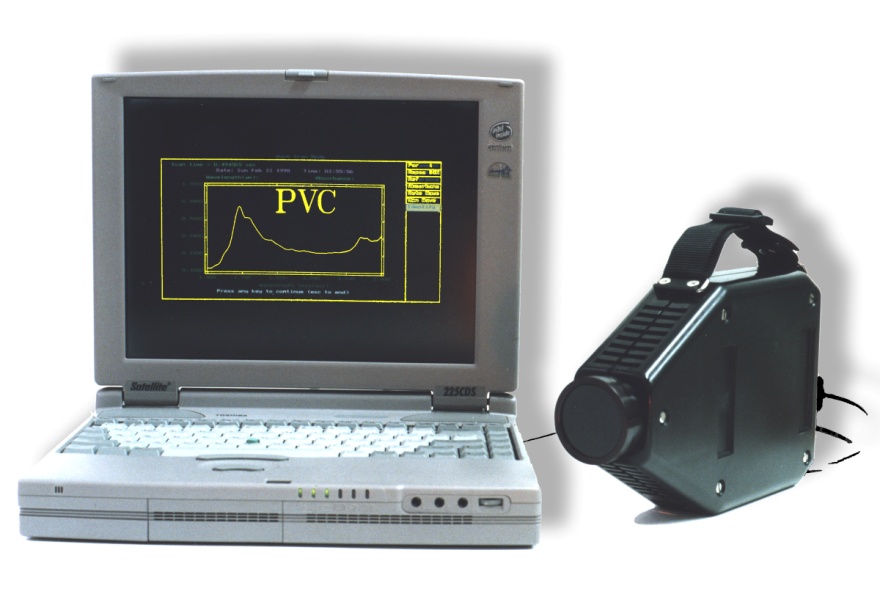 |
AOTF Infrared Spectrometer
Del Mar Photonics offer a handheld
infrared spectrometer based on the
acousto-optic tunable filter (AOTF). This instrument is about the size and
weight of a video camera, and can be battery operated. This unique, patented
device is all solid-state with no moving parts. It has been sold for a wide
variety of applications such as liquid fuel analysis, pharmaceutical analysis,
gas monitoring and
plastic analysis.
Miniature AOTF infrared spectrometer uses
a crystal of tellurium dioxide to scan the wavelength. Light from a light source enters
the crystal, and is diffracted into specific wavelengths. These wavelengths are
determined by the frequency of the electrical input to the crystal. Since there
are no moving parts, the wavelength scanning can be extremely fast. In addition,
specific wavelengths can be chosen by software according to the required algorithm, and therefore can be modified without changing the
hardware. After the infrared radiation reflects off of the sample, it is
converted into an electrical signal by the detector and analyzed by the
computer. Del Mar Photonics is looking for international distributors for
RAVEN - AOTF IR spectrometer for plastic identification and for variety of
scientific and industrial collaborations to explore futher commercial potential
of AOTF technology.
New:
AOTF spectrometer to measure lactose, fat and proteins in milk
|
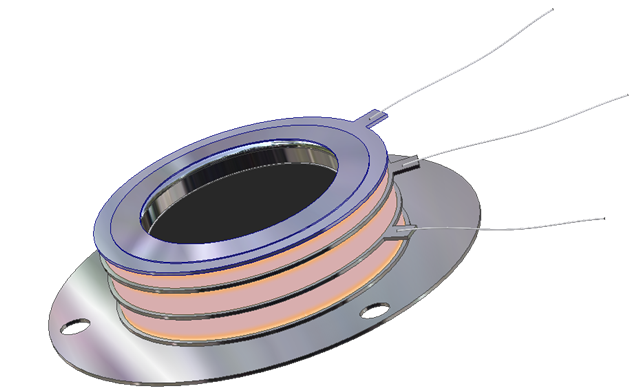 |
Open Microchannel Plate Detector
MCP-MA25/2 -
now in stock!
Microchannel Plate Detectors MCP-MA series are an open MCP detectors
with one or more microchannel plates and a single metal anode. They are intended
for time-resolved detection and make use of high-speed response properties of
the MCPs. MCP-MA detectors are designed for photons and particles detection in
vacuum chambers or in the space.
MCP-MA detectors are used in a variety of applications including UV, VUV and EUV
spectroscopy, atomic and molecular physics, TOF mass–spectrometry of clusters
and biomolecules, surface studies and space research.
MCP-MA detectors supplied as a totally assembled unit that can be easily mounted
on any support substrate or directly on a vacuum flange. They also can be
supplied premounted on a standard ConFlat flanges.
buy online -
ask for research discount!
Featured application:
Analysis of biological molecules on surfaces using stimulated desorption
photoionization mass spectrometry
|
 |
Hummingbird EMCCD camera
The digital Hummingbird
EMCCD camera combines high sensitivity, speed and high resolution.
It uses Texas Instruments' 1MegaPixel Frame Transfer Impactron device which
provides QE up to 65%.
Hummingbird comes with a standard CameraLink output.
It is the smallest and most rugged 1MP EMCCD camera in the world.
It is ideally suited for any low imaging application such as hyperspectral
imaging, X-ray imaging, Astronomy and low light surveillance.
It is small, lightweight, low power and is therefore the ideal camera for
OEM and integrators.
buy online |
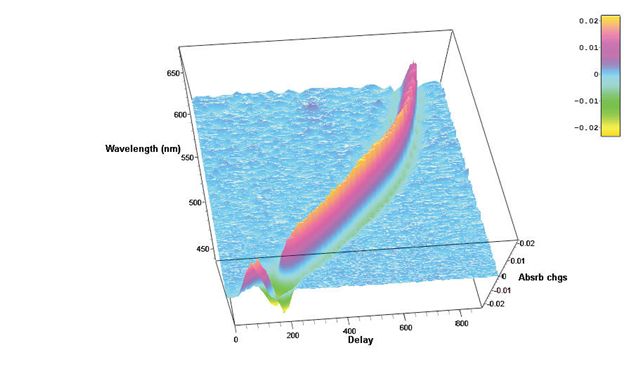 |
Hatteras-D
femtosecond transient absorption data acquisition system
Future nanostructures and biological nanosystems will take
advantage not only of the small dimensions of the objects but of the
specific way of interaction between nano-objects. The interactions
of building blocks within these nanosystems will be studied and optimized on
the
femtosecond time scale - says Sergey Egorov, President and CEO of Del Mar
Photonics, Inc. Thus we put a lot of our efforts and resources into the
development of new Ultrafast
Dynamics Tools such as our Femtosecond Transient Absorption Measurements
system Hatteras. Whether you want to
create a new photovoltaic system that will efficiently convert photon energy
in charge separation, or build a molecular complex that will dump photon energy
into local heat to kill cancer cells, or create a new fluorescent probe for
FRET microscopy, understanding of internal dynamics on femtosecond time scale
is utterly important and requires advanced measurement techniques.Reserve a
spot in our Ultrafast Dynamics Tools
training workshop in San Diego, California.
|
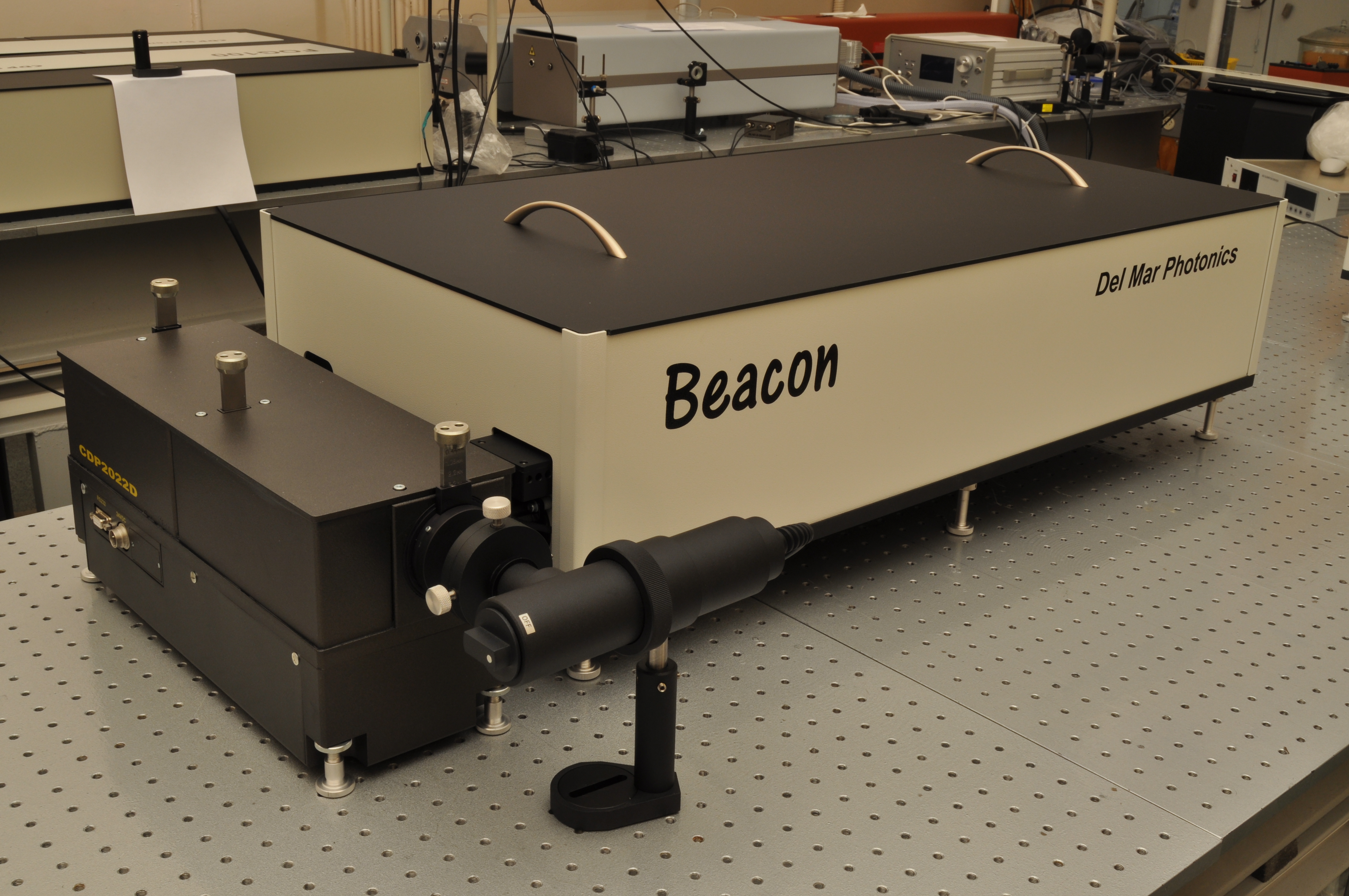 |
Beacon Femtosecond Optically Gated Fluorescence Kinetic Measurement System
-
request a quote -
pdf
Beacon together with Trestles Ti:sapphire oscillator, second and third harmonic
generators. Femtosecond optical gating (FOG) method gives best temporal
resolution in light-induced fluorescence lifetime measurements. The resolution
is determined by a temporal width of femtosecond optical gate pulse and doesn't
depend on the detector response function. Sum frequency generation (also called
upconversion) in nonlinear optical crystal is used as a gating method in the
Beacon femtosecond fluorescence kinetic measurement system. We offer
Beacon-DX for operation together with Ti: sapphire femtosecond oscillators
and Beacon-DA for operation together with femtosecond amplified pulses.
Reserve a
spot in our Ultrafast Dynamics Tools
training workshop in San Diego, California.
|
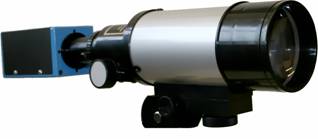 |
Wavefront Sensors: ShaH Family
A family of ShaH wavefront sensors represents recent progress of Del Mar
Photonics in Shack-Hartmann-based technology. The performance of Shack-Hartmann
sensors greatly depends on the quality of the lenslet arrays used. Del Mar
Photonics. developed a proprietary process of lenslet manufacturing, ensuring
excellent quality of refractive lenslet arrays. The arrays can be AR coated on
both sides without interfering with the micro-lens surface accuracy. Another
advantage of the ShaH wavefront sensors is a highly optimized processing code.
This makes possible real-time processing of the sensor data at the rate
exceeding 1000 frames per second with a common PC. Due to utilizing low-level
programming of the video GPU, it is possible to output the wavefront data with a
resolution up to 512x512 pixels at a 500+ Hz frame rate. This mode is favorable
for controlling modern LCOS wavefront correctors.
The family of ShaH wavefront sensors includes several prototype models, starting
from low-cost ShaH-0620 suitable for teaching laboratory to a high-end
high-speed model, ShaH-03500. The latter utilizes a back-illuminated EM-gain CCD
sensor with cooling down to -100°C. This makes it possible to apply such a
wavefront sensor in astronomy, remote sensing, etc.
|
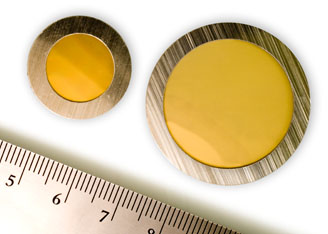 |
Terahertz systems, set ups and components
New band pass and long pass THz optical filters based on porous silicon and metal mesh technologies.
Band pass filters with center wavelengths from 30 THz into GHz range and transmissions up to 80% or better. Standard designs
with clear aperture diameters from 12.5 to 37.5 mm.
Long pass filters with standard rejection edge wavelengths from 60 THz into GHz range. Maximum transmission up to 80% or
better, standard designs at 19.0 and 25.4 mm diameters.
Excellent thermal (from cryogenic to 600 K) and mechanical properties
THz products:
Portable Terahertz Source
THz Spectrometer kit with Antenna
THz transmission setup
THz time domain spectrometer Pacifica fs1060pca
THz time domain spectrometer Pacifica fs780pca
THz detectors: Golay cell and LiTaO3 piroelectric detectors
PCA - Photoconductive Antenna as THz photomixer
Pacifica THz Time Domain Spectrometer - Trestles Pacifica
Holographic Fourier Transform Spectrometer for THz Region
Wedge TiSapphire Multipass Amplifier System - THz pulses generation
Terahertz Spectroscopic Radar Mobile System for Detection of Concealed Explosives
Band pass filters with center wavelengths from 30 THz into GHz range
Long pass filters with standard rejection edge wavelengths from 60 THz into GHz range
Generation of THz radiation using lithium niobate
Terahertz crystals (THz): ZnTe, GaAs, GaP, LiNbO3 - Wedge ZnTe
Silicon Viewports for THz radiation
Aspheric collimating silicon lens - Aspheric focusing silicon lens
|














